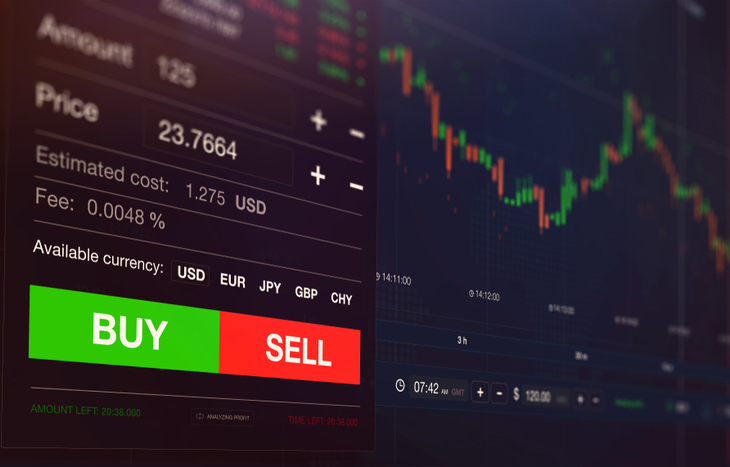What is a Day Order?

When buying stocks through a broker, there are several different types of orders an investor might submit. The simplest and most straightforward is a day order. As the name implies, this is an order that’s only good for the day. If the trading period comes to an end and the order hasn’t been filled by the broker, it expires. This is in contrast to a “fill or kill” order or a “good ‘til canceled” order, which will remain open until market conditions trigger its fulfillment criteria.
There are actually different types of day orders. And while they’re each different in terms of execution criteria, they’re all bound to the current trading period. It doesn’t matter when during the day an investor submits the order, it’ll expire when the closing bell rings if it’s not filled before then.
Here’s a closer look at these orders, including different types of orders, and how to use them effectively.

A Look at Order Type by Duration
As mentioned, day orders are one of the simplest types of time-dependent orders to understand; however, they’re not the only type. Investors seeking to time their entry or exit from a position might use any number of time-dependent orders:
- Day orders expire at the end of the trading period if not filled.
- Good ‘til canceled orders remain active until they’re filled or canceled.
- Fill or kill orders get filled all at once within a certain time period or not at all.
Time-bound orders put a clock on order execution, which can work for investors. For instance, a good ‘til canceled order can help an investor set a threshold for buying once a stock drops to a certain level. This allows the investor to buy in at a desired price, without monitoring the stock. Day orders are apt for investors with short-term strategies that might only last through the current trading period.
How it Works
The execution of these orders hinges on the established level: the price that triggers the order’s execution. For instance, if you wanted to buy 50 shares of Teladoc Health Inc. (NYSE: TDOC) at $74, you could submit a day order with those criteria. If the price of Teladoc hits $74 during the current trading period, it’ll trigger your order. If it doesn’t, your order expires at the end of the day.
These orders are very straightforward, which is why most brokerages make them the default order type. When you place a market order, for example, it’s going to be a day order. This helps prevent any carryover into the next period, including orders a trader might’ve forgotten about. If they want to carry an order forward over multiple trading periods, investors need to specifically designate a good ‘til canceled order.
Types of Day Orders
Investors use day orders to both enter and exit positions. Depending on whether they want to open or exit a position, they’ll submit either a stop order or a limit order.
- Stop orders represent a price that’s below the current price of the stock: the “stop” is the lowest acceptable price an investor will sell at.
- Limit orders represent a price that’s above the current price of the stock: the “limit” is the highest acceptable price an investor will buy at.
There are also market orders to consider. These are the simplest and most straightforward, representing an action to buy or sell immediately. These orders are day orders by default, since they’re executed immediately. It’s important to note that market orders don’t guarantee a price, which can mean paying more or less in fast-moving markets.
When to Use a Day Order
Day orders are applicable to both long-term investors and short-term traders.
For long-term investors, the assumption is that they’re simply looking to open a position and hold it. They don’t necessarily care about minor variances in price, so much as they do opening the position. As a result, they don’t need to carry their order forward any longer than the current trading period. Most often, they’ll use a market order, which is a day order by default.
For short-term traders, day orders are a great way to set thresholds across multiple positions, to quickly enter and exit trades throughout the day. For example, before markets open, traders might place a series of stop and limit orders for the day. This allows them to capitalize on price movements without hovering over the buy/sell button all day. There’s also the added safeguard of end-of-day expiration, since carrying an order forward could open the trader to risk.
Ultimately, day orders are the perfect way to focus on the current trading period. There’s no carry-forward to worry about and thus, each new period is a clean slate for submitting buy/sell orders with unique and specific criteria.
Tips for Using Day Orders
There’s not a big learning curve associated with day orders. Instead, investors and traders should focus on learning when and how to submit different types of orders, and how to leverage them into strategic entry/exit over the course of a trading period.
Be warned, however. These orders aren’t always “set it and forget it” orders. Traders can run into problems in fast-moving markets if their stop or limit orders are too tight. It’s important to use day orders as safeguards, to ensure you’re hitting predetermined price targets. Rely on them to simplify trading action, not necessarily automate it.






